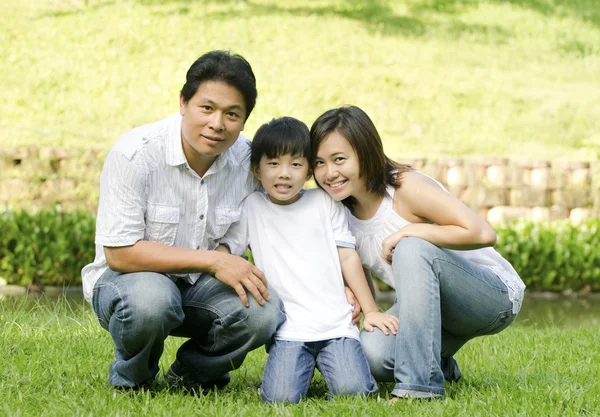Like most things in life, parenting grows and evolves, and parents- new and old, rush to keep up with the times. With the rise of parents of all ages taking to social media, whether it be with personal accounts or family centered content, parents have discovered a whole new slew of slang terms taking the internet by storm.
So if you find yourself scratching your head in confusion the next time you are scrolling through your Tiktok for-you-page, never fear. Your friendly SmileTutor Gen Z intern is here to help you decode these new buzzwords.

1. Crunchy Parenting
Contrary to popular belief, chips, tofu and hair accessories have not (yet?) shot to the top of the list for parenting must-haves. Referring to the slang term “crunchy-granola”, crunchy parents are most well known for their opened-minded outlook on life, prioritising the use of natural or organic goods in the home, from produce to clothing, to even cleaning supplies. Crunchy moms are usually accompanied by their freely roaming kids, and generally try to stay away from processed food items, and screen time.
Think of a hippie-influenced, Whole Foods parent!
2. Silky parenting
On the flip side of the crunchy parent, you have the- you guessed it, silky parent. A modern mom or dad through and through, the silky parent is someone who is more than overjoyed to be a parent in the age of modern conveniences. The silky mom believes that the happy parent is the best parent. Not afraid to indulge the family in a takeout meal after an exceptionally long day, or some screen time for the kids so mom or dad can have such much needed me time. If your kids have the Cocomelon jingle stuck in their head or yours, this might just be you!
3. Silky Parenting
Meeting both types of parents in the middle, is the scrunchy parent. No stranger to gluten free bread or free range eggs. The scrunchy parent is not afraid to balance the scales with a happy meal or a Milo Dinosaur at the hawker centre. The scrunchy parent tries to blend homeopathic, hollistic natural childrearing methods with the conveniences of modern city living (thank you Grabfood!).
Which parenting style would you think you fall under? If you are unsure, share this with a friend or two and see what they would describe you as!
4. Gentle Parenting
The latest parenting trend that has been taking parenting forums by storm since as early as 2020- is gentle parenting. With parenting trends moving away from more disciplinarian styles, and a greater emphasis being placed on the mental well-being of parent and child, gentle parenting seemed like the natural evolution of parenting styles.
The term was coined by British author Sarah Ockwell Smith in the 2010s, but has exploded into the mainstream in recent times. With a focus on empathy on the side of the parents, gentle parenting is said to foster emotionally regulated behaviour in children.
While some parents worry that gentle parenting encourages parents to opt out from disciplining their children, it is quite the contrary. Gentle parenting emphasises on setting firm boundaries with children, especially younger children, and enforcing them in a way that relevant to the boundary being tested in an age-appropriate manner.
5. Sharenting
In an age where our phones have become practically an extension of us, the parents among us will no doubt be no stranger to uploading an adorable photo (or 5) of their kids to Instagram, Facebook or Tiktok. With a rise in ‘mommy bloggers’ and family-oriented content creators, more and more parents might be inclined to follow suit, documenting more and more of their children’s lives on social media.
Hence the slang term ‘sharenting’, a term describe a parent or parents that share much of their children’s lives and parenting styles online.

While seemingly a harmless way for parents to document their child’s milestones and share them with friends and family, or connect with other likeminded families, many parents and netizens question the safety and ethics of ‘sharenting’. Milennial influencers like JianHao Tan, his wife Debbie and daughter Starley come to mind, or iconic expat mommy blogger Brie Benfell!

What do you think? Are you a parent who enjoys sharing your family milestones online, or a parent that values digital anonymity?
6. Beige Parenting

With the rise of aesthetic content dominating every corner of the internet, one particular aesthetic has risen to popularity above the rest. Not too distantly related to the minimalist decor trend, beige parents or beige parenting refer to parents who transfer their minimalist aesthetic to their children. Commonly identified by their fondness for wooden toys and play structures, beige parents can often be found decking their homes and children out in neutral, earth toned clothes and furnishings.
While many homes in Singapore are a reflection of the homeowner(s) ideal aesthetic, experts urge parents to continue introducing brightly coloured toys to their children, especially younger ones. While the muted tones of the beige parent’s aesthetic might be calming for the child, bright colours stimulate children to explore the space around them, encouraging exploration and curious play.
7. Sittervising
Sittervising, as the name suggests, alludes to a parent or a caregiver that hangs back, sitting and observing the children as they engage in activities like free play. If that raises a red flag for any of you readers, hear me out.

Sittervising might not be the mark of a lazy or uninvolved parent, but a parent that makes the conscious choice to give their child space to make their own choices or mistakes during free play. this parenting style gives the child a sense of independence, but allows the parent to still be close enough to ensure that the child does not end up in serious danger.
For example, a parent hovering around their child in the playground might affect the way they play. They might not be so inclined to join other children in games, or turn to the supervising adult to solve “problems” that might arise in play. With a ‘sittervising’ parent nearby but not involved in the child’s play, children are free to engage with their peers without judgement, and come up with their own solutions to small problems that might crop up in play.
Sittervising also offers a healthy space for parent and child to spend the day. With the rise of parents working from home, a parent feeling like they have to constantly engage their child might be draining for the already busy parent. Sittervising allows the child to learn to self entertain, giving parent and child independent space to engage in their own activities.
No matter what type of parent you are, no parents likes to see their child lag behind in school, or fail to benefit from that little extra push. If you or your children feel like they need a little something extra to succeed, give us at Smiletutor a call, where we can surely match you and your child with that special tutor that works with your parenting language.
We hope that this article has helped you decode some of the more head-scratching phrases out there on the internet, and hopefully you can find something in this article that you might want to implement at home!
